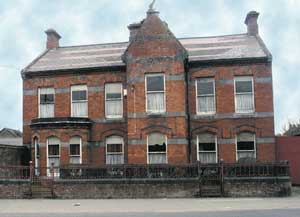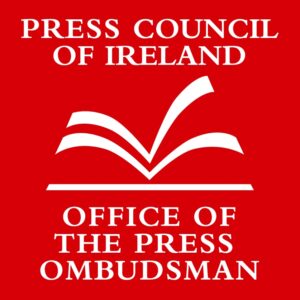 SINCE exclusively revealed by the Limerick Post that a “mystery purchaser” had made a successful bid for the ancestral home of author Kate O’Brien, there has been much speculation as to his plans for the Mulgrave Street property.
SINCE exclusively revealed by the Limerick Post that a “mystery purchaser” had made a successful bid for the ancestral home of author Kate O’Brien, there has been much speculation as to his plans for the Mulgrave Street property.Last Friday, this reporter confirmed the development to Mayor Jim Long, just hours before he was to officiate at the opening of the Kate O’Brien Weekend in the Belltable Arts Centre.
The well known County Limerick businessman and horse breeder specifically requested to the Limerick Post that his name not be revealed “just yet”.
He disclosed that his decision to purchase was only recently taken.
“I had no prior plans to acquire it – I was passing by one day not so long ago and saw the for sale sign and just then began to give it some thought,” he said.”
In the company of the conservation architect, Tom Quinlan, the new owner will undertake restoration of the property, which is a protected structure.
Having fallen into dereliction in recent years, the house, which city councillors have, for the past number of years been urging Limerick City Council to acquire for the city, recently received an exterior surface makeover.
Emphatic that he has “absolutely no intention of converting it into bed-sits,” the new owner says:
“I am currently exploring ideas but you can rest assured it will benefit the city and community culturally.
“I’m looking at perhaps a combination of a writer’s museum and maybe a presence from the University of Limerick School of Architecture – those are just two ideas at the moment.
“Reconstruction work to the property’s railings and all brick work, will be carried out by local craftsmen. The overall restoration work will take about a year”.
A surprise find in the house was the discovery of school books from Laurel Hill, which Kate O’Brien attended. Also found were a pair of tennis shoes and a collection of Irish Silver.
The property, which was acquired by the O’Brien family in the 1700s on Mulgrave Street, then called the Gallows Green Road (there was a gallows on the Fair Green nearby where pubic hangings were carried out, for centuries).
The gallows was removed in the 1950s, or perhaps earlier.
The writer’s ancestors supplied armies with horses for troopers and found favour with the Czars who required a certain type of horse for the Russian Imperial Army.
The new owner told this reporter that it is on record that in their dealings with land owners in Ballysimon and Park, whose land they frequently used to graze the horses, “everyone was paid – they were a very honourable family”.
Welcoming the development, Mayor Jim Long, who last year attended the naming of a prominent street in Avila, Spain, after the Limerick author who lived there for a number of years, said he is absolutely delighted that the new owner has committed to making the house benefit the people of Limerick.
Welcoming the ‘great news,” Cllr Tom Shortt said:
“I admire someone who, out of his own resources is contributing so admirably to the city – if it is to be used as a writer’s museum etc, it will have great potential for Limerick.
“A city can be defined by its writers and a writer’s museum would attract visitors who appreciate good literature – this new owner deserves support – I admire his fantastic generosity and vision and I hope the city’s institutions buy into the opportunity he has gifted us”.



